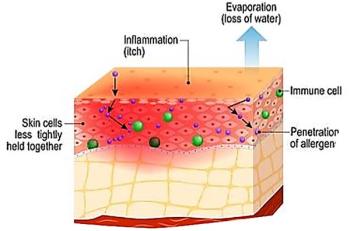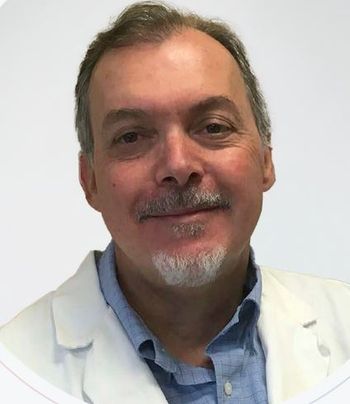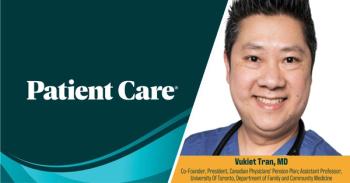
Living Near a Busy Highway Impedes Children's Lung Growth
LOS ANGELES -- Freeway traffic pollution can retard lung development of children whose homes are not far from the side of the road, researchers here reported.
LOS ANGELES, Jan. 26 -- Freeway traffic pollution can retard lung development of children whose homes are not far from the side of the road, researchers here reported.
Children exposure to traffic pollution during their rapid pulmonary development, from ages 10 to 18, had eight-year lung growth that was significantly stunted, W. James Gauderman, Ph.D., of the University of Southern California here, and colleagues, reported online in The Lancet.
The lung growth was slowed in children who lived within 500 meters (about a third of a mile) of a freeway compared with children who lived 1,500 meters (about one mile) or more away, the investigators found.
The findings came from the Children's Health Study, a longitudinal study of respiratory health, that enrolled 3,677 children (mean age 10 years) living in 12 southern California communities representing a wide rage of regional air quality.
Most important, local exposure to freeway traffic had adverse effects on children's lungs independent of regional air quality, the investigators said.
Residential proximity to freeway traffic was associated with smaller eight-year increases in FEV1 and maximum midexpiratory flow rate (MMEF), which translated into pronounced deficits in percent-predicted lung function at age 18, the researchers said.
Adverse respiratory effects in children have been linked to asthma and other respiratory diseases, while individuals with a deficit at age 18 will probably continue to have less than healthy lung function, with risks for respiratory and cardiac diseases for the remainder of their lives, the researchers said.
For example, children who lived within 500 meters of a freeway had substantial decreases in eight-year growth of forced expiratory volume in 1s (FEV1-81 mL, P=0.01 [95% CI -143 to -18]), compared with children who lived at least 1,500 meters away.
Decreases were also substantial for MMEF (-127 mL/s, P=0.03 [-243 to -11]), the investigators found.
Joint models showed that both local exposure to freeway and regional air pollution had detrimental, but independent, effects on lung-function growth, the researchers said.
Pronounced deficits in attained lung function at age 18 were recorded for those living within 500 meters of a freeway, with mean percent-predicted 97.0% for FEV1 (P=0.013, relative to >1,500 m [CI 94.6 to 99.4]) and 93.4% for MMEF (P=0.006, CI 89.1 to 97.7).
The association between FEV1 growth and distance to a freeway was significant in various sensitivity analyses, the researchers reported. Further investigation showed that low socioeconomic status was associated with increased traffic exposure. However, socioeconomic status was not significantly associated with FEV1 growth, and therefore adjustment for this variable induced only a modest change, the investigators sad.
Adjustment for indoor sources of air pollution, including gas stove, pet and tobacco smoke also resulted in little change in the estimated freeway-distance effects, they found.
An average of 6.2 pulmonary function tests were done per child. Most children were of non-Hispanic white or Hispanic ethnic origin, with 440 (12%) living within 500 meters of a freeway, and most of these children living in six of the 12 communities studied.
"We did not find any evidence that traffic effects varied depending on background air quality, which suggests that even in an area with low regional pollution, children living near a major roadway are at increased risk of health effects," the investigators said.
Otherwise-healthy children who were non-asthmatic and non-smokers also had a significant decrease in lung function from traffic pollution, Dr. Gauderman said. This suggests that all children, not just susceptible subgroups, are potentially affected by traffic exposure.
Diesel emissions, which include elemental carbon, are a primary contributor to particulate matter concentrations in the communities most affected by traffic. A pollutant, such as elemental carbon, could explain the impaired lung function found in this study, the researchers said, adding that additional research is needed to identify specific traffic pollutants that cause these health effects.
In discussing the study limitations, the researchers said that as in any epidemiological study, these results could be confounded by factors related to both traffic conditions and lung-function growth.
The results were robust, they said, but as in all cohort studies, participant attrition was a potential bias, However, in an analysis of a subset of children who were followed-up for the full eight years, the traffic effects were the same, so that participant loss was an unlikely explanation.
This study adds to evidence that the present regulatory emphasis on regional air quality might need to be modified to include consideration of local variation in air pollution, Dr. Gauderman said.
In many urban areas, he said, population growth is forcing the construction of housing tracts and schools near busy roadways, so that many children live and attend school close to major sources of air pollution.
"In view of the magnitude of the reported effects and the importance of lung function as a determinant of adult morbidity and mortality, reduction of exposure to traffic-related air pollutants could lead to substantial public-health benefits," Dr. Gauderman's team concluded.
In an accompanying comment, Thomas Sandstrm, M.D., of University Hospital in Ume, Sweden, and Bert Brunekreef, Ph.D., of the University of Utrecht in The Netherlands, wrote that although the researchers did all they could to take socioeconomic factors into account, the effect that social factors might have on lung function growth is difficult to define, and the possibility for residual confounding remains.
Another issue, they said, is school location. The study covered an age range when these children would have attended secondary school, and a line of study would have been to measure what preceding exposures at younger ages might have contributed to the deficits. The density and composition of traffic could also have been examined, but the study's power would have been insufficient to address these additional questions.
However, they said, these questions should not distract from the major achievement of follow-up of such a large group of children.
The findings by Dr. Gauderman and colleagues, combined with previous epidemiological studies, lead to "important questions for society about the structure of the transportation system, engine, fuels, combustion, and road dust in urban areas," Drs. Sandstrm and Brunekreef concluded.
Newsletter
Enhance your clinical practice with the Patient Care newsletter, offering the latest evidence-based guidelines, diagnostic insights, and treatment strategies for primary care physicians.





















































































































































































































































































